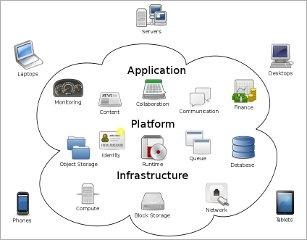The adoption of cloud computing technologies by South African and African companies is taking place faster than IT companies expected, says EOH Executive Director Rob Godlonton.
“18 months ago there was speculation that the development of cloud computing was still two-three years away, but the reality is that it is being adopted faster than anyone could have anticipated,” he says. “Many organisations are asking questions about the technology and conducting assessments of their systems to see which cloud computing offering will work for their business. Other companies have already moved their IT infrastructure to a private cloud and EOH currently has clients that it hosts in private clouds. “Dormac is one example of a client that has moved its entire IT infrastructure into a private cloud. We host their entire IT infrastructure and applications including their branch network from an independent data centre in Johannesburg,” explains Godlonton.
“The major advantages of going the cloud computing route include not having to recruit, develop and retain their own IT resources needed to maintain your IT infrastructure, as these skills are all outsourced to providers. Cloud computing allows companies to focus on their core business while IT providers focus on the IT side,” says Godlonton. “The other big benefit is around virtualisation, which allows companies to significantly lower their carbon footprint through reduced hardware deployment. While the costs of virtualisation are still relatively high, in the medium term these costs will decrease with better technology. Typically purpose built data centres run more efficiently than a company’s own in-house IT infrastructure resulting in significant power savings over time,” he explains. EOH partners with Teraco who are world leaders in the development of fully managed, outsourced data centres with power management, cooling, fire suppression, access control and cable management services.
“Most of the growth we are seeing in cloud computing is in the development of private clouds. This is seen as a more secure option where companies can still configure their applications to meet their specific business requirements. However, we anticipate a rapid move of small to medium size businesses to public clouds in the near future, which have standardised applications that are easy to implement. We are also seeing the IT departments of large corporate companies developing their own private clouds and billing their services back to the company as a private service provider would,” says Godlonton.
Moving service out
Cloud computing is the next phase of outsourcing.
“Traditional outsourcing, as we know it, is on its way out as we move to cloud computing, which provides IT as a service. In the past, companies outsourced their IT, had no control over what was delivered, and were billed for the full service at a fixed monthly rate. Now, with the advent of cloud computing, companies can choose from a vast range of services to suit their business requirements and are billed on a per-usage basis,” says Godlonton.
There are three service models deployed on top of a cloud infrastructure: Software as a Service (SaaS) where users provide applications over a network; Platform as a Service (PaaS) which is the deployment of customer-created applications to a cloud; and Infrastructure as a Service (IaaS) which includes rent processing, storage, network capacity and other fundamental computing resources.
“Companies no longer need to be responsible for the maintenance and upgrading of IT equipment and infrastructure as this can all be done by the IT service provider and they are billed for what they use. Virtualisation is enabling companies to consolidate their IT usage, providing companies with rapid access to powerful and more flexible IT capabilities at price points unreachable with traditional IT,” he concludes.





















